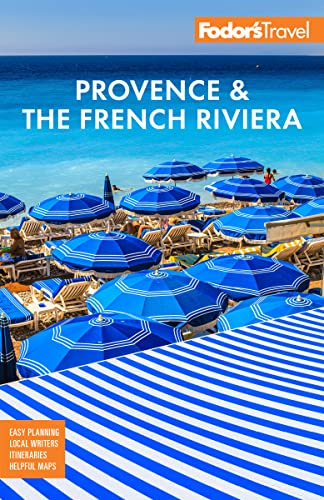Lavender in Provence
Van Gogh may have made the sunflower into the icon of Provence, but it is another flower —unprepossessing, fragrant, and tiny—that draws thousands of travelers every year to Provence. Once described as the “soul of Haute-Provence,” lavender has colored Provence’s plains since the days of the ancient Romans. Today it brings prosperity, as consumers are madly buying hundreds of beauty products that use lavender essence.
The Lavender Route
Provence is threaded by the Routes de la Lavande (Lavender Routes), a wide blue-purple swath that connects over 2,000 producers across the Drôme, the plateau du Vaucluse, and the Alpes-de-Haute-Provence, and there you'll find some of the prettiest sights—and smells—of the region. Whether you’re shopping for artisanal bottles of the stuff (as with wine, the finest lavender carries its own Appellation d’Origine Contrôlée), spending a session at a lavender spa, or simply wearing hip-deep purple as you walk the fields, one of the most essential aspects of visiting Provence is the magical world of blue, one you usually only encounter on picture postcards.
To join the lavender-happy crowds, you have to go in season, which (if you’re lucky) runs from June to early August. Like Holland’s May tulips, the lavender of Haute-Provence is in its true glory only once a year: the last two weeks of July, when the harvesting begins—but fields bloom throughout the summer months for the most part. If you plan to be at the Musée de la Lavande between July 1 and August 25, you can watch animations of workers swathing lavender with copper scythes.
Gordes
One of the top towns to see lavender fields in Provence is Gordes. Wild lavender is omnipresent here, growing in large tracts as you reach the entrance of the small, unspoiled hilltop village, making for a patchwork landscape as finely drawn as a medieval illumination. A cluster of houses rises above the valley in painterly hues of honey gold, with cobbled streets winding up to the village’s picturesque Renaissance château, making it one of the most beautiful towns in Provence. Gordes has a great selection of hotels, restaurants, and B&Bs to choose from. Spend the early afternoon among tasteful shops that sell lovely Provençal crafts and produce, much of it lavender-based.
History of Lavender
Provence and lavender go hand in hand—but why? The flower is native to the Mediterranean, and grows so well because the pH balance in the soil is naturally perfect for it (pH 6–8). But lavender was really put on the map here when ancient Romans arrived to colonize Provence and used the flower to disinfect their baths and perfume their laundry (the word comes from Latin lavare, “to wash”). From a small grass-roots industry, lavender proliferated over the centuries until the first professional distillery opened in Provence in the 1880s to supply oils for southern French apothecaries. After World War I, production boomed to meet the demand of the perfumers of Grasse (the perfume center of the world). Lavender is now farmed in England, India, and the States, but the harvest in the South of France remains the world’s largest.
Types of Lavender
There are four main species. True lavender (Lavandula angustifolia) produces the most subtle essential oil and is often used by perfume makers and laboratories. Spike lavender (Lavandula latifolia) has wide leaves and long floral stems with several flower spikes. Hybrid lavender (lavandin) is obtained from pollination of true lavender and spike lavender, making a hybrid that forms a highly developed large round cluster. French lavender (Lavendula stoechas) is wild lavender that grows throughout the region and is collected for the perfume industry. True lavender thrives in the chalky soils and hot, dry climate of higher altitudes of Provence. It was picked systematically until the end of the 19th century and used for most lavender-based products. But as the demand for this remarkable flower grew, so did the need for a larger production base. By the beginning of the 20th century, the demand for the flower was so great that producers planted fields of lavender at lower altitudes, creating the need for a tougher, more resistant plant: the hybrid lavandin.
Lavender Production
Lavender fields begin blooming in late June, depending on the area and the weather, with fields reaching their peak from the end of July to early August. The first two weeks of July are considered the best time to catch the fields in all their glory. Lavender is harvested from July to September, when the hot summer sun brings the essence up into the flower. Harvesting is becoming more and more automated; make an effort to visit some of the older fields with narrow rows—these are still picked by hand. Lavender is then dried for two to three days before being transported to the distillery. Distillation is done in a steam alembic, with the dry lavender steamed in a double boiler. Essential oils are extracted from the lavender by water vapor, which is then passed through the cooling coils of a retort.




